Double Vision: Understanding Primary vs. Secondary Service Sides in Electrical Systems
In electrical power distribution, the terms “primary” and “secondary” are used frequently—but often misunderstood. They refer to two sides of a transformer that serve very different roles in the power delivery process. Whether you're working with a utility pole-mount transformer or a building-mounted unit substation, understanding the distinction between primary and secondary service sides is critical for safe design, proper equipment selection, and NEC compliance.
This article breaks down what “primary” and “secondary” mean, how they’re applied in real-world systems, and what parts of the National Electrical Code (NEC) govern their design and protection.
What is the Primary Side?
The primary side of an electrical service refers to the high-voltage input side of a transformer. It receives power from the utility (or an upstream transformer) and typically operates at medium to high voltage levels—anywhere from 2.4 kV to 34.5 kV, though this varies by region and utility.
Key Traits:
Connected directly to utility power or main distribution feeders.
Usually owned and maintained by the utility, although in some large facilities the primary side is customer-owned.
Primary voltage must be clearly understood when designing or specifying transformers.
What is the Secondary Side?
The secondary side of a transformer is the low-voltage output side that distributes usable power to a facility. This is where power is stepped down—typically to 480/277V, 208/120V, or similar, depending on the building load requirements.
Key Traits:
Feeds the main switchgear, panelboards, or service entrance equipment.
This is the customer’s side of the electrical system.
Circuit protection, grounding, and conductor sizing must follow NEC service and feeder rules.
Primary vs. Secondary: What's the Real Difference?
Voltage Range: Primary side operates at medium/high voltage (2.4kV–34.5kV+), while the secondary side is low voltage (≤ 600V typical).
Ownership: The primary side is often utility-owned; the secondary side is typically customer-owned.
Transformer Function: The primary side is where power input occurs (step-down begins here); the secondary side delivers power output to building systems.
Code Focus: The primary side may fall under utility rules or NEC Article 490. The secondary side is governed by NEC Articles 230, 240, 250, and 310.
Typical Equipment: The primary side includes primary cables, fuses, and risers. The secondary side includes main switchboards, panels, and breakers.
NEC Considerations for Primary and Secondary Sides
The NEC primarily governs the secondary (customer) side but also provides guidance for customer-owned primary systems—common in industrial and campus environments.
Service Definition – NEC Article 100
Defines a service as the conductors and equipment delivering power from the utility to the premises. The service point (often at the transformer secondary terminals or meter) marks the transition from utility to customer responsibility.
Primary Side (Customer-Owned) – NEC Article 490
Governs medium-voltage equipment (over 1000V), including enclosures, disconnecting means, and insulation for customer-owned systems.
Secondary Side – NEC Articles 230, 240, 250
NEC 230 (Services): Covers service entrance conductors, disconnects, and clearances.
NEC 240 (Overcurrent Protection): Requirements for fuses and breakers on the secondary side.
NEC 250 (Grounding and Bonding): Covers grounding electrode systems, bonding jumpers, and transformer grounding.
Transformer Protection – NEC 450
NEC 450.3 provides guidelines for overcurrent protection for both primary and secondary sides of transformers. Protection is based on the transformer’s rating and impedance.
Real-World Example: Pad-Mounted Transformer
12.47 kV utility feeder: Primary side – governed by utility standards or NEC 490.
Pad-mounted transformer: Transition point – NEC 450 applies if customer-owned.
480Y/277V panelboard: Secondary side – governed by NEC 230, 240, 250, 310.
In this setup, the utility delivers primary voltage to a pad-mounted transformer. The secondary side of that transformer feeds the customer's system, where full NEC enforcement begins.
Why It Matters
Misunderstanding the difference between primary and secondary sides can lead to:
Incorrect conductor or fuse sizing
Unsafe or noncompliant grounding
Improper coordination with utility or inspectors
Liability issues in system failures or accidents
Designers, contractors, and inspectors must clearly understand this distinction—especially when medium-voltage or customer-owned gear is involved.
Conclusion
While “primary” and “secondary” may sound like simple directional labels, they represent a fundamental split in power distribution, ownership, and code application. The primary side delivers power to the premises—often under utility control—while the secondary side distributes that power internally under NEC rules. Knowing where this transition occurs, and how codes apply to each side, ensures safe, efficient, and compliant installations.
References
NEC 2023:
Article 100 – Definitions
Article 230 – Services
Article 240 – Overcurrent Protection
Article 250 – Grounding and Bonding
Article 310 – Conductors
Article 450 – Transformers
Article 490 – Equipment Over 1000 Volts, Nominal
IEEE C57 – Standard for Transformers
NESC (National Electrical Safety Code) – Utility-side guidelines
NFPA 70B – Recommended Practice for Electrical Equipment Maintenance
Disclaimer:
The information, tools, and resources provided on this website are for general informational purposes only. While Empower Engineering strives to ensure accuracy and relevance, no guarantee is made regarding the completeness or applicability of the content to specific projects. Users are responsible for verifying all calculations, code interpretations, and design decisions with licensed professionals and local authorities. Empower Engineering assumes no liability for any loss, damage, or code violation resulting from the use of this website’s content.
Empower Engineering | July 15, 2025
11513 W Fairview Ave Ste 101
Boise, ID 83713
admin@empowerengineering.com
208-870-4379


